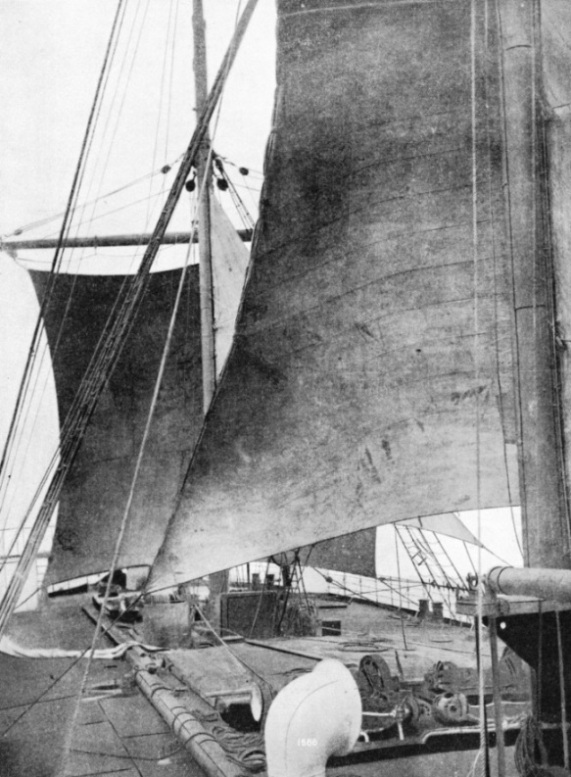
© Shipping Wonders of the World 2012-



Part 53
Part 53 of Shipping Wonders of the World was published on Tuesday 9th February 1937.
This issue included a colour plate illustrating the French liner Normandie. It formed part of the chapter on The Modern Ship’s Maintenance. This plate had previously appeared as the cover to part 30. The plate was attached to page 1677 of this part.
The Cover
““This week’s cover shows one of the giant grain elevators at work in Bromborough Dock (River Mersey) on the Nigerian. Since this picture was taken the Nigerian, which formerly belonged to the United Africa Company, has been sold to Moss of Liverpool and renamed Kyrenia. Her gross tonnage is 3,543, and she has a length of 321 ft 9 in, a beam of 46 ft 2 in and a depth of 28 ft 2 in.”
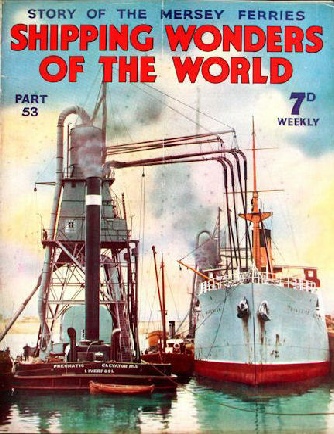
Contents of Part 53
Chinese Piracy
Cardiff, South Wales
The Modern Ship’s Maintenance
The French Liner Normandie (colour plate)
Ship-and-Shore Communication
Seamanship To-day
Story of the Mersey Ferries
Open Boats of the British Coasts
Chinese Piracy
The story of piracy in the coastal waters and rivers of China, concluded from part 52. This chapter complements the article on Gunboat Patrols in China
in part 35.
The Sunning
“CAPTURED BY PIRATES IN 1926, the Sunning was saved at the last moment by the outstanding bravery of her officers, who recaptured the vessel and drove the pirates off. The Sunning, 2,555 tons gross, was built in 1916 at Hong Kong. She had a length of 310 ft 4 in, a beam of 41 ft 2 in and a depth of 22 ft 5 in. She was lost during a typhoon in 1936.”
Cardiff, South Wales
Famous for its exports of coal, Cardiff owes its importance to the proximity of the coal-fields of South Wales, and to the enterprise of the men who, having built the docks on the foreshore, brought steam coal from the mines and shipped it to every part of the world.
This chapter is the seventeenth article in the series on Great Ports of the World.
A Modern Coal-Shipping Appliance
“A MODERN COAL-SHIPPING APPLIANCE of the electrically driven conveyor-belt type in use at Cardiff Docks. The vessel in the dock is the Yugoslav ship Podmladak. With a gross tonnage of 3,862, she has a length of 350 feet, a beam of 51 ft 1 in and a depth of 23 ft 10 in. The belt-conveyors are situated in Roath Dock, which is equipped also with six coaling cranes and thirty other cranes.”
The Modern Ship’s Maintenance
The debit side of the shipowner’s accounts includes many heavy expenses of which the passenger knows little. The interior and the exterior of the ship must be frequently examined and all deterioration made good. Maintenance of the machinery alone entails a huge expenditure.
The Modern Ship’s Wireless Installation
“ALL CONTINENTS ARE WITHIN CALL of the modern ship’s wireless installation. Ships that are equipped for medium and short-wave transmission, direction finding and long-distance telephony may need three separate cabins to house all the apparatus, and economy of space is essential. The medium-wave telegraphy equipment on the Orion (23,371 tons gross), illustrated above, is a good example of a modern ship’s lay-out, with the receivers and amplifiers in front of the operator’s chair, and the transmitting instruments to the right. One clock shows Greenwich time and the other local or ship’s time.”
Seamanship Today
A sudden emergency is often the supreme test of the quality of seamanship, although the ordinary routine work in the handling of a modern vessel demands a high standard of efficiency and reliability. Seamanship is a comprehensive term, and includes knotting and splicing, boat work, helmsmanship, and so forth.
Ship to Shore Communication
Wireless is no longer regarded merely as a means of summoning assistance in an emergency. It is an invaluable aid to navigation, and its use does much to reduce the possibility of accidents. It is still the principal means by which a ship can communicate beyond her visible horizon.
Some of the most efficient ferries in Great Britain, if not in Europe, ply across the River Mersey with a regularity that even fog rarely disturbs. The vehicular ferries linking Liverpool with the Cheshire shore are of a type rarely seen elsewhere. Users of Queensway -
Open Boats of the British Coasts
The combination of the boat-builder’s art and the seaman’s skill has produced a wide variety of open boats. Each is adapted to the particular conditions with which it has to contend, and many of the most primitive types still survive. This chapter is a special study of this subject. The article is concluded in part 54.
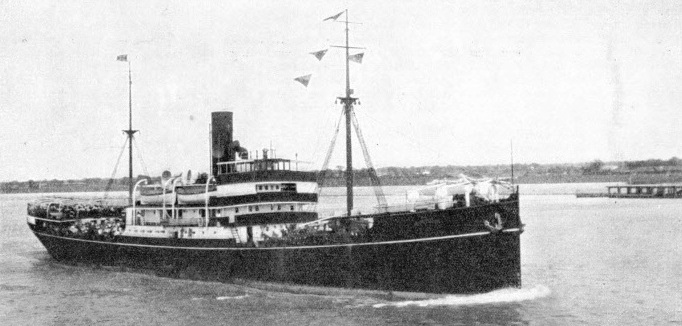
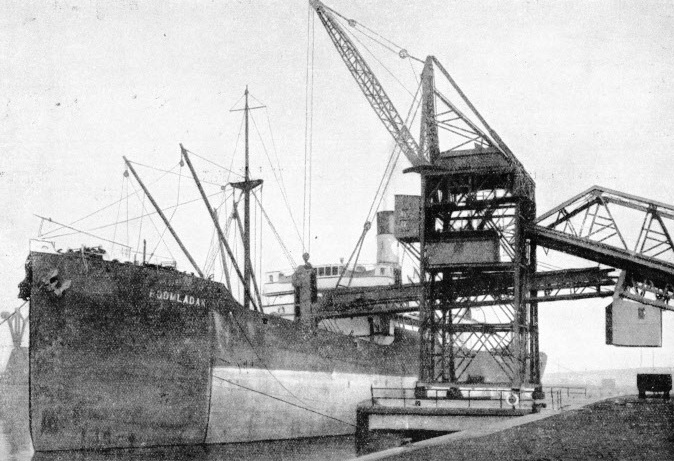
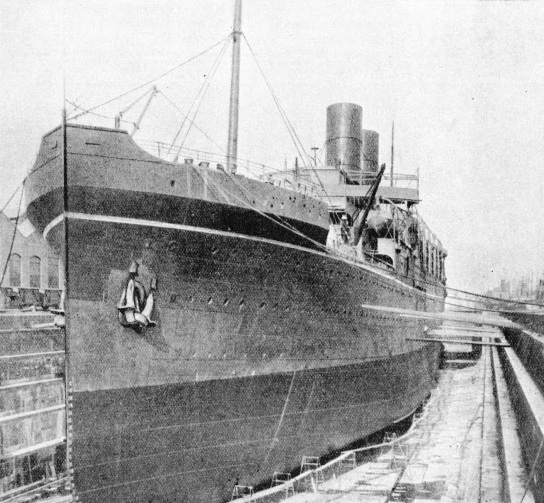
The King George V Dock
“THE KING GEORGE V DOCK, London, provides accommodation for vessels up to 30,000 tons. Dry dock rents vary with the size of the ship to be docked, but may amount to £150 to £200 a day. The Kaisar-i-Hind is a P and O twin-screw steamer of 11,518 tons gross. She has a length of 520 feet, a beam of 61 ft 2 in and a depth of 33 ft 1 in. She was built in 1914.”
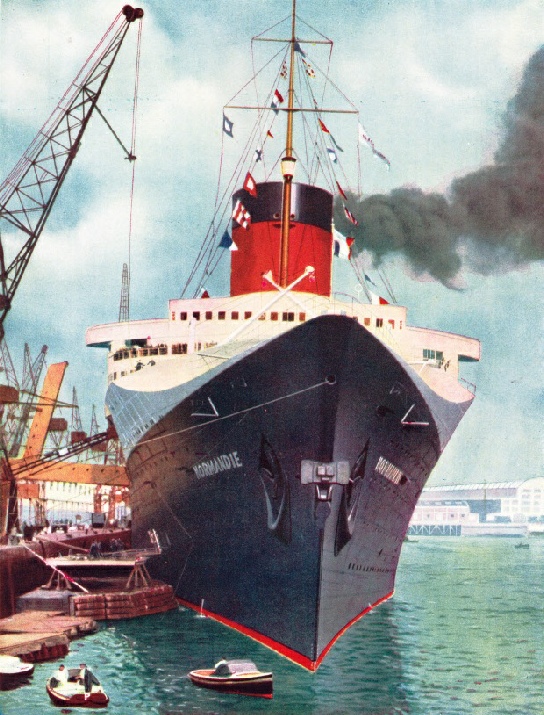
The Normandie
“ONE OF THE WORLD’S GREATEST SHIPS, the French liner Normandie is a vessel of 86,496 tons gross. She was built at St Nazaire, France, and launched on October 29, 1932. The Normandie has an overall length of
1,029 ft 4-in, a beam of 117 ft 9-in at the main deck and a depth of
57 ft 7-in. She is fully described in the chapter which begins on page 73. The Normandie held the Blue Riband of the Atlantic until it was wrested from her by the Queen Mary in 1936.”
This illustration was previously used as the cover for part 30.
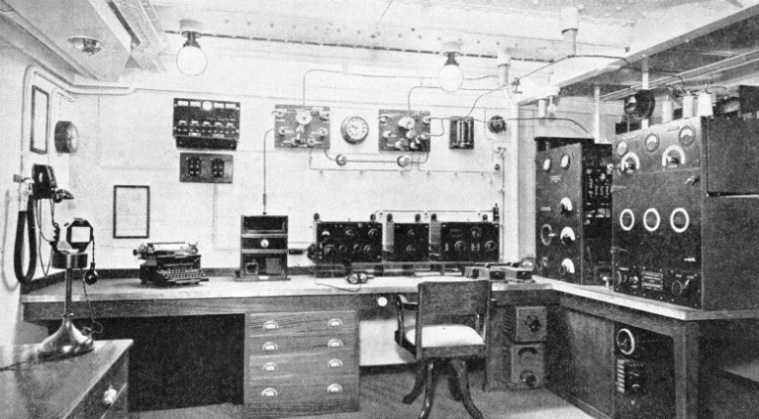
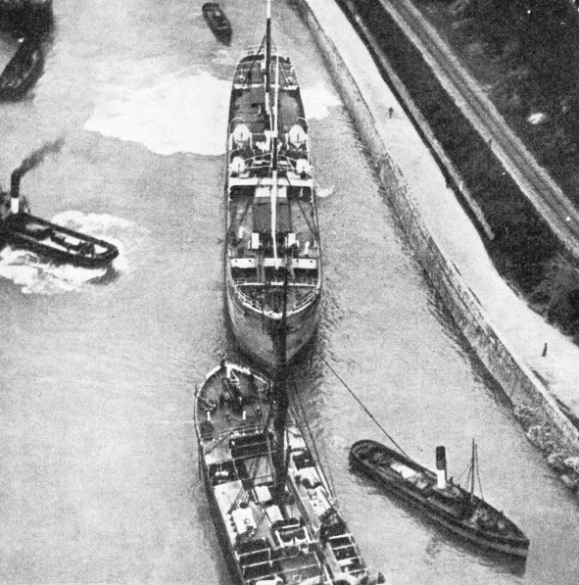
A Collision Averted
“A COLLISION AVERTED by the skilful handling of ships and tugs in the River Avon. This remarkable photograph was taken from the Clifton Suspension bridge. The strength of tides and currents, particularly in tidal rivers, greatly complicates the work of tugs handling large ships.”
